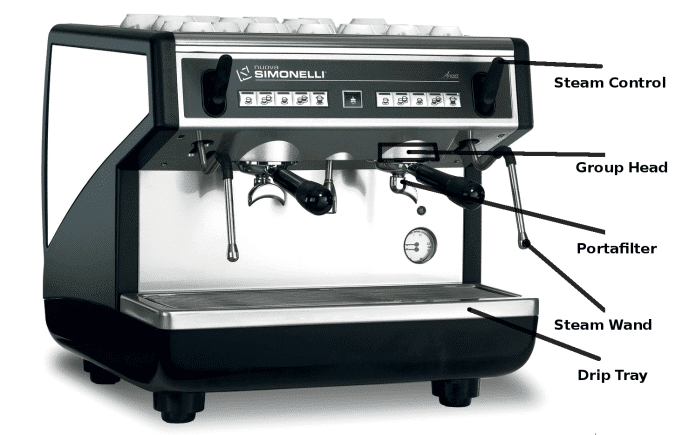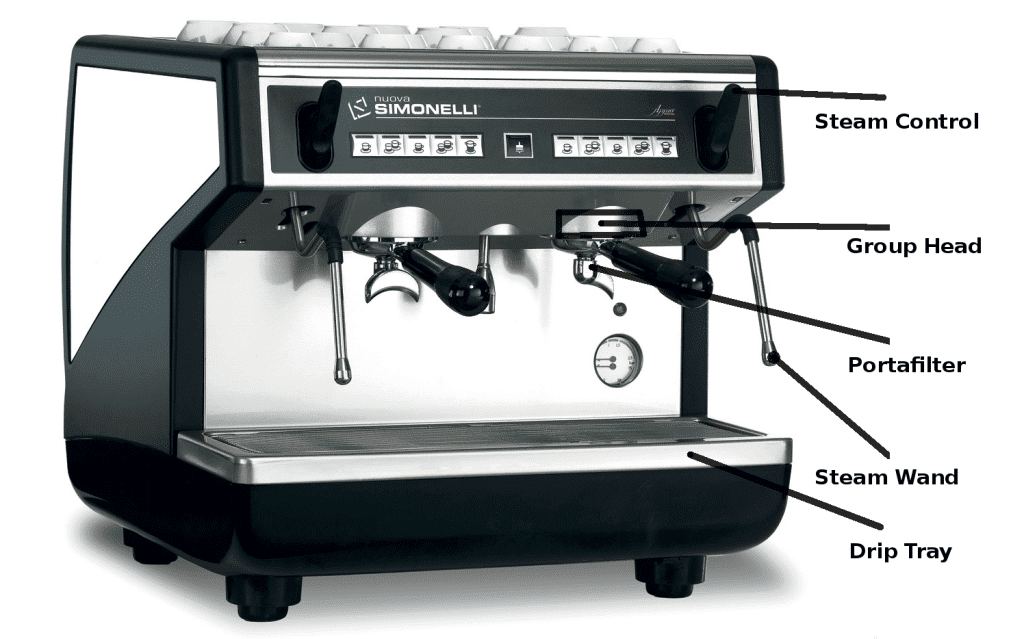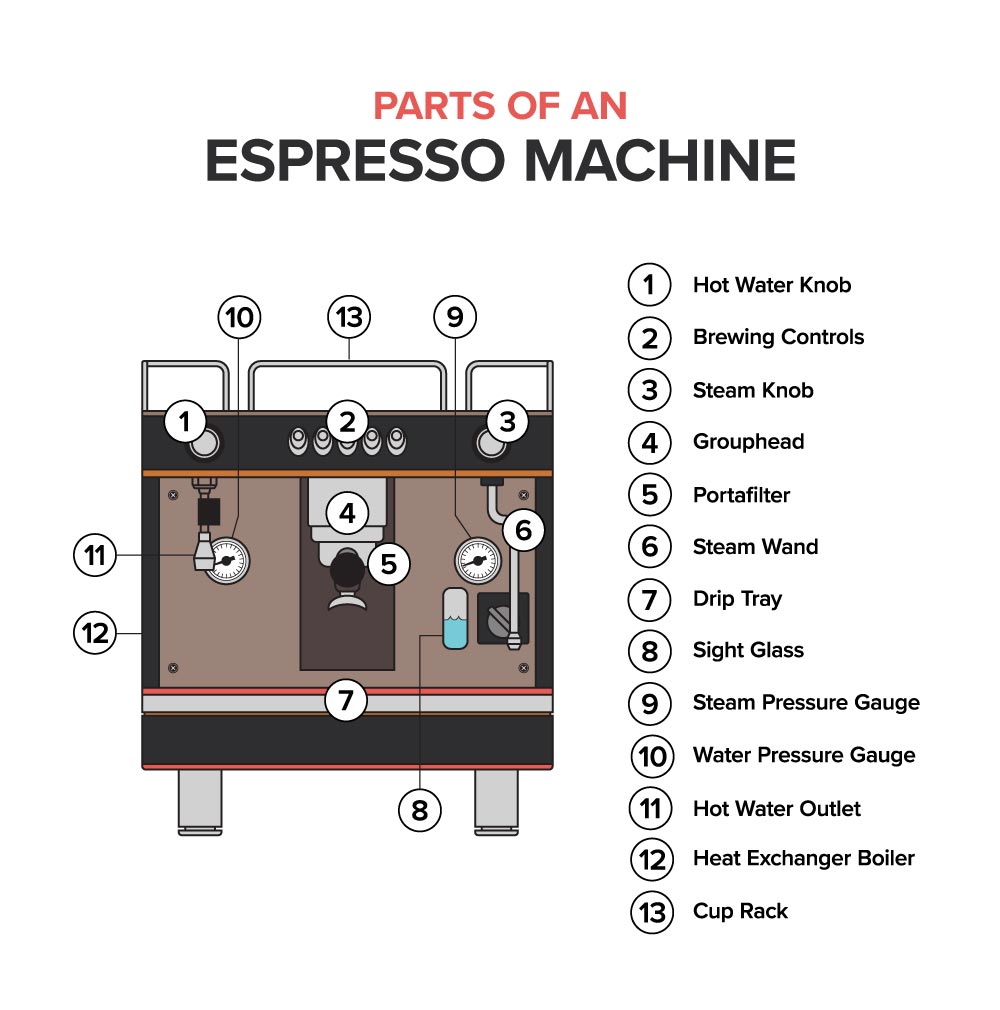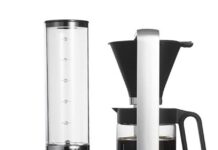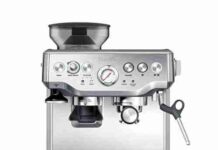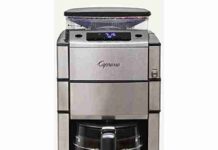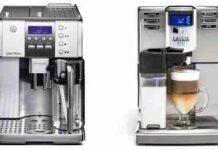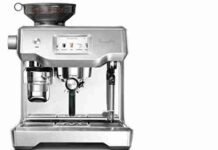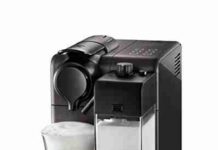Have you ever wondered what makes that perfect cup of espresso? In this article, we’ll take a closer look at the inner workings of an espresso machine.
We’ll guide you through everything from the intricate parts that make up this coffee lover’s dream to the fascinating process of brewing the perfect espresso shot.
Prepare to be amazed as we unravel the mystery behind this beloved caffeinated beverage and discover the magic happening within an espresso machine.
Water Reservoir
Purpose
The water reservoir is an essential component of an espresso machine. Its purpose is to store and supply water for the brewing process. Without a water reservoir, making espresso or other coffee-based drinks would be impossible.
Functionality
The water reservoir is typically located at the back or side of the espresso machine. It is designed to hold a specific amount of water, ranging from a few ounces to several liters. The reservoir has a valve or pump that allows water to flow into the machine when needed.
When making espresso, water is extracted from the reservoir and heated to the ideal brewing temperature. It is then forced through finely-ground coffee beans in the portafilter, resulting in a flavorful and aromatic espresso shot.
Maintenance
Regular maintenance is necessary to ensure the water reservoir’s proper functioning. It is essential to keep the reservoir clean and free from any residue or impurities that may affect the taste and quality of the espresso. Regularly emptying, cleaning, and refilling the water reservoir will help prevent any buildup or contamination.
Pump
Purpose
The pump is a crucial component of an espresso machine and creates the necessary pressure to extract the flavors from coffee grounds during the brewing process. It delivers a precisely measured amount of water through the coffee grounds to produce a rich, concentrated shot of espresso.
Functionality
The pump is a motor-driven device that generates pressure to force hot water through the coffee grounds. It ensures that the water is delivered at the correct pressure and consistency, allowing for the extraction of flavors and oils from the coffee beans.
Without a reliable pump, the espresso machine could not produce the required pressure for optimum extraction, resulting in a weak and underwhelming espresso shot.
Maintenance
To maintain the pump’s functionality, cleaning and descaling it regularly is essential. Descaling removes mineral buildup and prevents clogging, ensuring the pump operates efficiently. Additionally, it is crucial to follow the manufacturer’s instructions for pump maintenance and replacement, if necessary.
Boiler
Purpose
The boiler is one of the most critical components of an espresso machine. It aims to heat the water to the correct temperature for brewing coffee. Without a properly functioning boiler, achieving the ideal brewing temperature and quality of espresso would be impossible.
Functionality
The boiler is typically made of stainless steel or brass and is responsible for consistently heating and maintaining the water temperature. It contains a thermostat that monitors and regulates the temperature to ensure it remains within the desired range.
The water is heated using either steam or an electric heating element, depending on the type of espresso machine. Once the water reaches the optimal brewing temperature, it can be pumped through the coffee grounds for extraction.
Maintenance
To keep the boiler in good working condition, regular maintenance is crucial. Descaling and cleaning the boiler periodically is essential to remove any mineral buildup or residue affecting its efficiency. Additionally, regularly checking the boiler’s pressure and temperature ensures it operates within the required parameters.
Portafilter
Purpose
The portafilter is an integral part of the espresso machine, serving as a vessel for holding and distributing coffee grounds during brewing. It plays a crucial role in extracting the flavors and oils from the coffee beans, resulting in a rich and flavorful shot of espresso.
Functionality
The portafilter is a handle-like device with a perforated basket or filter at one end. It is designed to hold a predetermined amount of finely ground coffee beans. When the portafilter is inserted into the espresso machine, hot water is forced through the coffee grounds, extracting the flavors and oils to create the espresso shot.
The design of the portafilter ensures the even distribution of water through the coffee grounds, allowing for an optimal extraction and consistent flavor profile.
Maintenance
To ensure the portafilter functions properly, regular cleaning is essential. After each use, the portafilter should be emptied of used coffee grounds and rinsed thoroughly with water. Additionally, it is a good practice to periodically deep clean the portafilter by soaking it in a cleaning solution to remove any residue or oils that may accumulate over time.
Grouphead
Purpose
The group head is a crucial part of an espresso machine as it connects the portafilter and the machine. Its purpose is to distribute water evenly over the coffee grounds and maintain a consistent temperature during extraction.
Functionality
The group head is typically located on the front of the espresso machine and is equipped with a shower screen and dispersion plate. Hot water is evenly distributed and forced through the coffee grounds when the portafilter is locked into the group head.
The dispersion plate ensures that water is evenly distributed over the coffee grounds, allowing for a consistent extraction. The shower screen helps to prevent channeling, which occurs when water finds the path of least resistance through the coffee grounds, resulting in an uneven extraction.
Maintenance
To maintain the functionality of the grouphead, regular cleaning is essential. Cleaning the shower screen and dispersion plate regularly will prevent any buildup or clogging that could affect the extraction process. Additionally, it is essential to check the group head gasket for wear and tear, as it may need periodic replacement to ensure a proper seal.
Steam Wand
Purpose
The steam wand is a vital component of an espresso machine, serving the purpose of frothing and steaming milk for various coffee beverages such as cappuccinos and lattes. It allows for creating creamy, textured milk to complement the espresso shot.
Functionality
The steam wand is typically a metal tube with a small hole at the end. It is connected to the boiler, which heats the water to produce steam. Steam is released when the steam wand is activated, creating a vortex that mixes and stretches the milk, resulting in a velvety texture.
Baristas can control the amount of steam and the angle of the steam wand to achieve the desired milk consistency, whether it be silky microfoam for latte art or thick froth for cappuccinos.
Maintenance
To ensure the steam wand functions properly, it is necessary to clean and purge it after each use. This removes any milk residue that may have accumulated and prevents clogging. Additionally, regularly checking the steam wand for any signs of damage or wear, such as leaks or blocked holes, is essential to maintain its functionality.
Control Panel
Purpose
The control panel is a user interface on an espresso machine that allows baristas and users to program and control the various functions and settings. It provides easy access and control over parameters such as brewing time, temperature, and extraction pressure.
Functionality
The control panel is typically located on the front of the espresso machine and consists of buttons, knobs, and a digital display. It allows users to select their desired coffee preferences and adjust settings accordingly. The control panel provides information and feedback on the machine’s status, such as water level and temperature.
The functionality may vary depending on the model and complexity of the espresso machine. Some machines offer advanced programming options, while others have more straightforward controls for basic operations.
Maintenance
To maintain the control panel’s functionality, keeping it clean and free from spills or debris is essential. A soft, damp cloth to regularly wipe the control panel will prevent any buildup or damage. Additionally, following the manufacturer’s instructions for programming and maintenance will ensure the longevity and smooth operation of the control panel.
Grinder
Purpose
The grinder is an essential component of an espresso machine, grinding coffee beans to a consistent and delicate texture. It plays a crucial role in determining the taste and quality of the espresso shot.
Functionality
The grinder is typically located on top of or built into the espresso machine. It consists of a hopper that stores the coffee beans, a burr or blade mechanism for grinding, and a doser or doserless system for dispensing the ground coffee.
When the grinder is activated, it grinds the coffee beans to the desired particle size. The fineness of the grind can be adjusted based on the prepared coffee beverage. The ground coffee is then dispensed into the portafilter for extraction.
Maintenance
To ensure the grinder functions optimally, regular cleaning and maintenance are necessary. Keeping the grinder free from residual coffee and oil buildup is essential. Periodically, the burrs or blades may need to be replaced, depending on the usage and manufacturer’s recommendation. Additionally, adjusting the grind settings as needed to achieve the desired extraction is crucial for maintaining the quality of the espresso.
Drip Tray
Purpose
The drip tray is an integral part of an espresso machine, collecting any excess water or liquid that may be expelled during brewing. It helps to keep the area surrounding the machine clean and prevents any mess or spills.
Functionality
The drip tray is typically located at the bottom of the espresso machine. It is designed with a sloping surface or grid pattern to allow liquid flow. The drip tray is connected to a drainage system that can be easily removed and emptied.
During brewing, water may collect in the drip tray due to condensation or overflow. The drip tray ensures this excess liquid is contained, preventing it from dripping onto the countertop or floor.
Maintenance
Regular cleaning and emptying are necessary to maintain the drip tray’s functionality. Removing any accumulated liquid and residue is essential to prevent odors and clogging. Additionally, periodically checking the drainage system for any blockages or leaks is crucial for adequately functioning the drip tray.
Cup Warmer
Purpose
The cup warmer is a convenient feature of an espresso machine that preheats cups before serving coffee. It ensures that the coffee temperature is maintained and enhances the coffee experience.
Functionality
The cup warmer is typically located on top of or near the espresso machine. Its surface is designed to provide a consistent heat source for the cups, ensuring they are warm when the coffee is poured. Some cup warmers are heated using a dedicated heating element, while others utilize the residual heat from the espresso machine.
By preheating the cups, the cup warmer helps to maintain the coffee’s optimal temperature, prolonging the enjoyment of the hot beverage. It also prevents a sudden temperature drop when the hot coffee comes into contact with a cold cup.
Maintenance
To ensure the cup warmer retains its functionality, regular cleaning is necessary. Removing any spills, stains, or residue that may accumulate over time is essential. Additionally, periodically checking the cup warmer’s heating element and temperature is essential to ensure it operates effectively.


